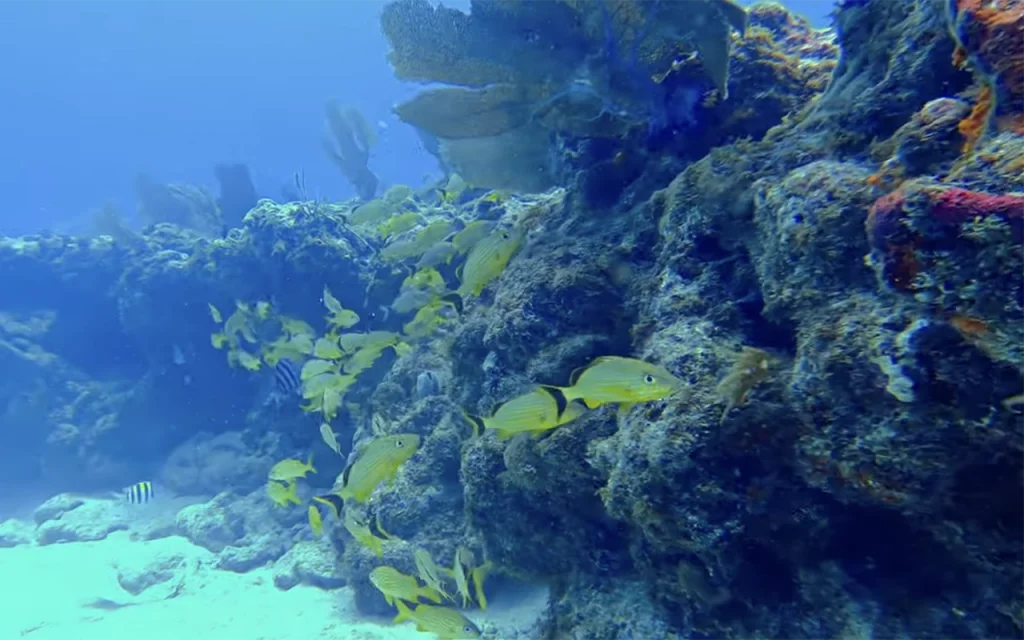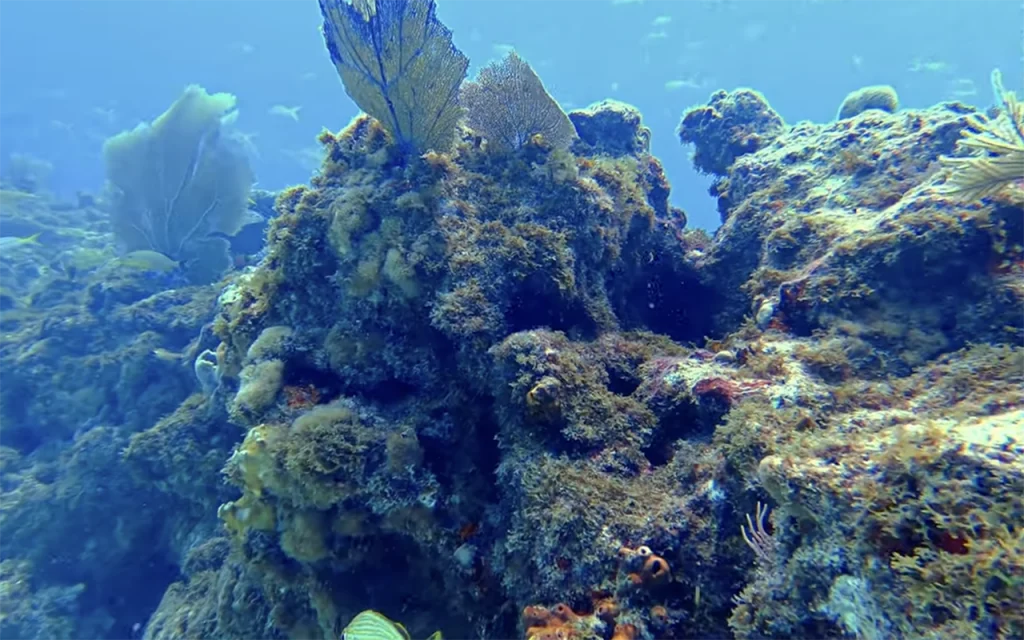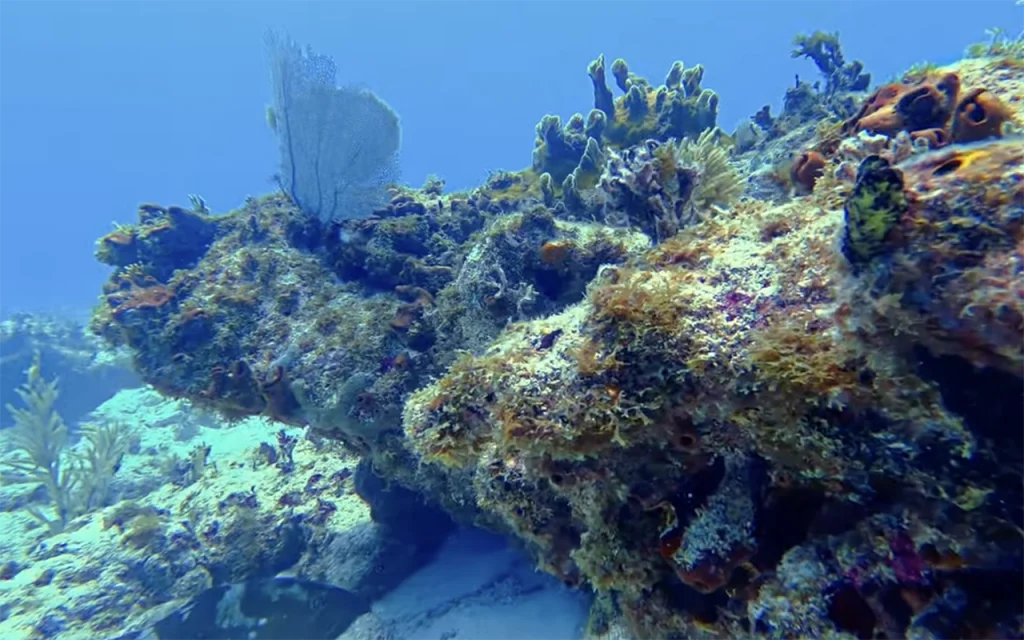Table of Contents

Divers express high satisfaction with their experiences at Hen and Chickens Reef, highlighting its beauty, biodiversity, and commitment to conservation.
Article at a Glance
- Islamorada Dive Center
- Regularly visits Hen and Chickens Reef, providing guided dives and equipment rentals.
- Known for its friendly staff and commitment to safety.
- Florida Keys Dive Center
- Located in Tavernier, just south of Key Largo, this PADI-certified center offers daily guided dives to Hen and Chickens Reef along with other popular sites.
- Provides scuba instruction, gear rental, and private charters.
- Aquatic Ventures
- Offers dive trips that include Hen and Chickens Reef as part of their itinerary.
- Focuses on providing a comprehensive diving experience in the Florida Keys.
- Edelweiss in the Florida Keys
- Specializes in snorkeling tours but also provides diving options at Hen and Chickens Reef.
- Known for its emphasis on marine conservation and education.
- Scuba Schedules
- Lists various dive operators that include Hen and Chickens Reef in their offerings, catering to both novice and experienced divers.
- PADI Dive Centers
- Various PADI-affiliated dive centers in the Florida Keys frequently schedule trips to Hen and Chickens Reef, emphasizing safety and professional instruction.
Hens & Chickens Reef Islamorada
Hen and Chickens is a shallow coral reef situated in the Florida Keys National Marine Sanctuary. This reef is located southeast of Plantation Key and is part of a designated Sanctuary Preservation Area (SPA).
Location and Coordinates
The Hen and Chickens reef is found in the Caribbean waters of the United States, specifically:
- Latitude: 24°56’07″N
- Longitude: 080°32’55″W
Historical Significance
During the 20th century, the reef was marked by the Hen and Chickens Shoal Light, which aided in navigation for vessels in the area.
Marine Life
The reef is home to various coral species, including Montastraea coral, which has been documented in the area. This diverse ecosystem contributes to the rich marine biodiversity of the Florida Keys.
Conservation Status
As part of the Florida Keys National Marine Sanctuary and designated as a Sanctuary Preservation Area, Hen and Chickens reef benefits from special protections aimed at preserving its delicate coral ecosystem and associated marine life.
What Marine Life Can I Expect To See?
Coral Species
- Brain Coral: Large, dome-shaped corals that are prominent in the area.
- Purple Coral: Adds a splash of color to the reef.
- Christmas Tree Coral: Named for its unique shape, resembling a Christmas tree.
Fish Species
- Barracuda: Often seen lurking around the reef.
- Angelfish: Colorful and commonly spotted.
- Grunts: Frequently found in large schools.
- Nurse Sharks: Occasionally sighted resting on the seafloor.
- Schoolmaster Snapper: Another common species in the area.
- Yellowtail Snapper: Often seen in schools, particularly around wrecks.
Other Marine Life
- Tarpon: These large fish are known to frequent the area.
- Eagle Rays: Although more common in other parts of the Keys, they can occasionally be spotted here.

What Do Divers Say About This Site?
General Impressions
- Diverse Marine Life: Divers report a rich variety of marine species, including colorful fish and impressive coral formations. The reef is characterized by massive brain and star coral mounds, as well as vibrant sea fans, which create a visually stunning underwater environment.
- Shallow Depth: With an average depth of around 15 feet and a maximum of 22 feet, the reef is ideal for beginners and snorkelers. This shallow depth allows for easy exploration and excellent visibility, often exceeding 50 feet.
Unique Features
- Coral Formations: The reef’s structure resembles a mother hen surrounded by chicks, with large coral heads that can reach heights of over 15 feet. This unique layout provides divers with a labyrinthine experience to explore.
- Photography Opportunities: The clarity of the water and the abundance of colorful marine life make it a popular destination for underwater photography enthusiasts.
Accessibility and Conservation
- Protected Area: As part of a Sanctuary Preservation Area, Hen and Chickens Reef benefits from conservation efforts that protect its delicate ecosystems. Divers appreciate the mooring buoys that prevent anchor damage to the corals, ensuring the reef remains pristine.
- Ease of Access: The reef’s proximity to shore makes it easily accessible for dive charters, contributing to its popularity among local dive operators.
Key Information
| Category | Details |
|---|---|
| Location | Florida Keys National Marine Sanctuary, southeast of Plantation Key |
| Coordinates | Latitude: 24°56’07″N, Longitude: 080°32’55″W |
| Depth Range | Average: 15 feet (4.5 meters); Maximum: 22 feet (6.7 meters) |
| Visibility | Typically 10 to 30 meters (33 to 100 feet) |
| Marine Life | Includes barracuda, angelfish, grunts, nurse sharks, tarpon, and various coral species |
| Unique Features | Mother hen and chicks coral formations; rusty shipwreck of an old barge |
| Diving Conditions | Generally calm waters with low currents; suitable for all skill levels |
| Best Time to Dive | November to April (dry season) for optimal visibility and conditions |
| Accessibility | Easily accessible from local dive charters; shallow entry points for snorkeling |
| Conservation Status | Designated as a Sanctuary Preservation Area within the Florida Keys National Marine Sanctuary |
Highlights of Diving This Site?
Shallow Depth and Accessibility
- Ideal for All Levels: With depths ranging from 10 to 22 feet, Hen and Chickens Reef is accessible for both novice divers and snorkelers, making it a popular choice for those new to the sport as well as experienced divers looking for a relaxed dive.
- Long Dive Times: The shallow waters allow divers to stay submerged longer, often enjoying extended exploration of the reef and wreck without the need for deep dive equipment.
Vibrant Marine Life
- Diverse Ecosystem: The reef is teeming with marine life, including large schools of yellowtail snapper, grunts, and barracuda. Divers frequently spot tarpon and even eagle rays in the area.
- Colorful Corals: The vibrant coral formations, including massive brain corals and colorful sea fans, create a stunning backdrop for underwater exploration and photography.
Unique Features
- Shipwreck: A notable highlight is the remains of a rusted shipwreck, believed to be an old brick barge that sank in 1949. The wreck adds an element of intrigue and serves as a habitat for various marine species, enhancing the diving experience.
- Photographic Opportunities: The bright colors of the corals against the clear blue waters provide excellent conditions for underwater photography, making it a favorite spot for photographers.
Conservation and Preservation
- Protected Area: As part of the Florida Keys National Marine Sanctuary and designated as a Sanctuary Preservation Area, Hen and Chickens Reef benefits from conservation measures aimed at preserving its delicate ecosystems. This ensures that divers can enjoy a healthy and vibrant marine environment.
My Favorite Dive Computers
I have compared the 3 top diving computers for each category to help making the right choice easier:
Iconic Spots At This Site
Coral Formations
- Mother Hen and Chicks: The reef’s name derives from its distinctive coral formations, which resemble a mother hen surrounded by chicks. This visual layout creates a beautiful underwater landscape that divers find captivating.
- Massive Coral Heads: Divers can explore large brain and star corals, some reaching over 15 feet in height. These formations create a labyrinthine environment that is both stunning and intriguing to navigate.
Shipwreck
- Rusty Shipwreck: A notable feature of the site is the remains of a rusted iron barge, believed to have sunk in 1949 while transporting bricks to Key West. The wreck, partially covered by corals, provides a unique contrast to the surrounding vibrant reef and serves as a habitat for various marine species.
- Marine Life Around the Wreck: The wreck attracts large schools of fish, including yellowtail snapper and grunts, as well as barracuda and tarpon. This abundance of life enhances the diving experience, making it exciting for underwater photographers and marine enthusiasts.
Marine Biodiversity
- Rich Fish Life: Divers frequently encounter diverse marine species, including snook, grouper, and occasionally eagle rays. The shallow waters allow for easy viewing of these creatures in their natural habitat.
- Colorful Corals: The reef is adorned with bright red and orange corals that thrive in the clear waters, creating excellent conditions for underwater photography.
Accessibility
- Easy Access: Located closer to shore than many other reefs in the Florida Keys, Hen and Chickens is easily accessible from dive charters based in Islamorada. This convenience makes it a popular choice for both novice and experienced divers seeking a memorable underwater adventure.
Environmental Conservation Efforts at Hen and Chickens Reef
Sanctuary Preservation Area Status
The reef is designated as a Sanctuary Preservation Area (SPA) within the Florida Keys National Marine Sanctuary. This status provides special protections for the reef and its inhabitants.
Protected Species
The SPA surrounds a patch reef that protects large populations of Endangered Species Act-listed star corals and brain corals. This designation helps safeguard these vulnerable species from human impacts.
Regulated Activities
Special regulations apply to the Hen and Chickens SPA, limiting certain activities to minimize human impact on the reef ecosystem. These regulations help maintain the reef’s health and biodiversity.
Mooring Buoys
To prevent anchor damage to corals, mooring buoys have been installed. This allows boats to secure themselves without dropping anchors, which can cause significant harm to the reef structure.
Monitoring and Research
The area is likely subject to ongoing monitoring and research efforts to track the health of the reef and its inhabitants, especially given the recent coral bleaching events in the Florida Keys.
Climate Change Awareness
The sanctuary acknowledges the impact of climate change, noting that very high water temperatures in the summer of 2023 caused widespread coral bleaching and mortality in the Florida Keys. This awareness can help inform future conservation strategies.

Maximizing Your Diving Experience at Hen and Chickens Reef
Timing Your Visit
- Best Season: Visit during the dry season (November to April) for optimal visibility and calmer seas.
- Water Temperature: Ranges from 70°F to 85°F (21°C to 29°C), with the warmest waters typically in summer months.
Dive Planning
- Depth Range: With depths from 10 to 22 feet, plan for longer bottom times and multiple dives in a day.
- Dive Duration: Take advantage of the shallow depth to extend your dive time, often up to an hour or more.
Photography Opportunities
- Macro Photography: Bring a macro lens to capture detailed shots of colorful corals and small reef inhabitants.
- Wide-Angle Shots: Use wide-angle lenses to capture the expansive coral formations and schools of fish.
Exploring Key Features
- Shipwreck: Spend time exploring the rusty remains of the old brick barge, which serves as an artificial reef.
- Coral Formations: Focus on the massive brain corals and star corals that give the reef its “hen and chicks” appearance.
Marine Life Observation
- Fish Spotting: Look for large schools of yellowtail snapper, grunts, and occasional sightings of tarpon and eagle rays.
- Coral Species: Identify various coral types, including the vibrant purple and Christmas tree corals.
Conservation Awareness
- Mooring Buoys: Use the provided mooring buoys to avoid anchor damage to the reef.
- Responsible Diving: Practice good buoyancy control and avoid touching or disturbing marine life.
Snorkeling Option
- Shallow Areas: Take advantage of the shallow depths for excellent snorkeling opportunities if you’re not scuba diving.
Capturing Memories at Hen and Chickens Reef: Photography Tips
Equipment Preparation
- Underwater Housing: Invest in a good underwater housing for your camera to protect it from water damage and allow for versatile shooting angles.
- Macro Lens: Consider using a macro lens for close-up shots of corals and small marine life, enhancing detail and clarity.
Camera Settings
- Manual Mode: Use manual settings to control exposure, aperture, and shutter speed. Adjust the white balance to counteract the blue hues often present underwater, ensuring accurate color representation.
- Aperture Control: Set a low aperture (larger f-stop number) for greater depth of field when capturing coral landscapes. If subjects are moving, increase the shutter speed to avoid motion blur, even if it means sacrificing some depth of field.
Composition Techniques
- Use Natural Light: Take advantage of the shallow depths (10 to 20 feet) where sunlight penetrates easily. Shoot during midday for the best lighting conditions.
- Framing Your Shots: Incorporate elements like coral formations and schools of fish into your composition. The iconic “hen and chicks” coral formations provide unique framing opportunities.
- Experiment with Angles: Capture top-down shots or shoot from different perspectives to add variety to your images.
Marine Life Photography
- Patience is Key: Observe marine life behavior and wait for the right moment to capture dynamic interactions or unique poses.
- Take Lots of Photos: Given the unpredictability of underwater subjects, take multiple shots to increase your chances of getting the perfect image.
Post-Dive Tips
- Editing Software: Use photo editing software to enhance colors and correct any exposure issues after your dive. This can help bring out the vibrant hues of the corals and marine life.
Frequently Asked Questions
When is the best time to dive Hen and Chickens Reef?
The best time to dive at Hen and Chickens Reef in the Florida Keys is during the dry season, which typically runs from November to April. This period offers the most favorable conditions for diving, including:
Optimal Visibility: During these months, water clarity is often at its best, with visibility ranging from 10 to 30 meters (approximately 33 to 100 feet), allowing divers to fully appreciate the vibrant coral formations and marine life.
Calm Seas: The dry season generally brings calmer seas, making for a more enjoyable diving experience without strong currents that can sometimes affect visibility and safety.
Warm Water Temperatures: Water temperatures during this time range from 70°F to 85°F (21°C to 29°C), providing comfortable conditions for divers.
What is the visibility like while diving Hen and Chickens Reef?
The visibility at Hen and Chickens Reef can vary, but generally offers good conditions for divers:Average visibility ranges from 10 to 30 meters (approximately 33 to 100 feet). The reef’s shallow depth (10-22 feet) allows for excellent visibility in ideal conditions.
However, there are some factors that can affect visibility:
– As Hen and Chickens Reef lies closer to shore than many other reefs in the area, it can be somewhat more prone to lower visibility at times.
– Visibility may be impacted by weather conditions, tides, and seasonal factors.
– The dry season (November to April) typically offers the best visibility conditions.
– To maximize your chances of good visibility:Plan your dive during the dry season if possible.
– Check with local dive operators for current conditions before your trip.
– Consider diving earlier in the day when visibility is often at its best.
How deep are the dives at Hen and Chickens Reef ?
The dives at Hen and Chickens Reef are quite shallow:
The average depth is around 15 feet (4.5 meters).
The maximum depth is approximately 20-22 feet (6-6.7 meters).
This shallow depth range makes Hen and Chickens Reef ideal for:
Novice divers and those learning to scuba dive
Snorkelers
– Extended bottom times, often up to an hour or more
– Excellent visibility due to sunlight penetration
– Underwater photography, especially with natural lighting
Is Hen and Chickens Reef suitable for beginners?
Yes, Hen and Chickens Reef is highly suitable for beginners.
Shallow Depth
Average Depth: The reef has an average depth of about 15 feet, with a maximum depth of 22 feet. This shallow environment allows beginners to gain confidence while diving without the pressures associated with deeper dives.
Calm Conditions
Limited Current: The site typically experiences low currents, making it easier for new divers to navigate and enjoy their underwater experience without the challenges posed by stronger water movements.
Rich Marine Life
Diverse Ecosystem: Beginners can expect to see a variety of marine life, including colorful fish and vibrant coral formations. This abundance of life makes for an engaging and visually stimulating dive, which is particularly rewarding for those new to the sport.
Accessibility
Easy Entry: The reef is easily accessible from dive boats departing from nearby locations, making it convenient for novice divers to reach the site without extensive travel.
Snorkeling Opportunities
Snorkeling Friendly: In addition to scuba diving, Hen and Chickens Reef is also popular for snorkeling. This provides an alternative for those who may not yet be certified divers but still want to experience the beauty of the reef.
Is Hen and Chickens Reef suitable for advanced divers?
While Hen and Chickens Reef is often highlighted as an excellent site for beginners, it can still offer interesting experiences for advanced divers:
Shallow Depth: The reef’s maximum depth of 22 feet (6.7 meters) means it’s not challenging in terms of depth for advanced divers.
Marine Life Observation: Advanced divers can appreciate the rich biodiversity, including large schools of yellowtail snapper, grunts, barracuda, and even tarpon.
Photography Opportunities: The shallow depth and clear waters make it an excellent site for underwater photography, which advanced divers might enjoy exploring.
Wreck Exploration: There’s a rusty shipwreck of an old iron barge, providing an interesting feature to explore.
Coral Formations: The site boasts impressive coral structures, including brain corals and other healthy coral heads, which can be fascinating for divers of all levels.
Extended Bottom Time: The shallow depth allows for longer dives, giving advanced divers ample time to thoroughly explore the reef and its inhabitants.





